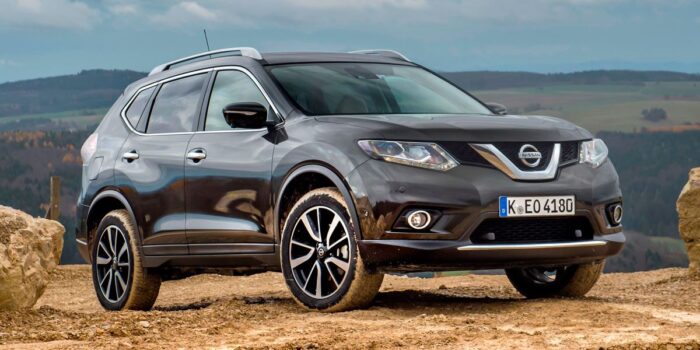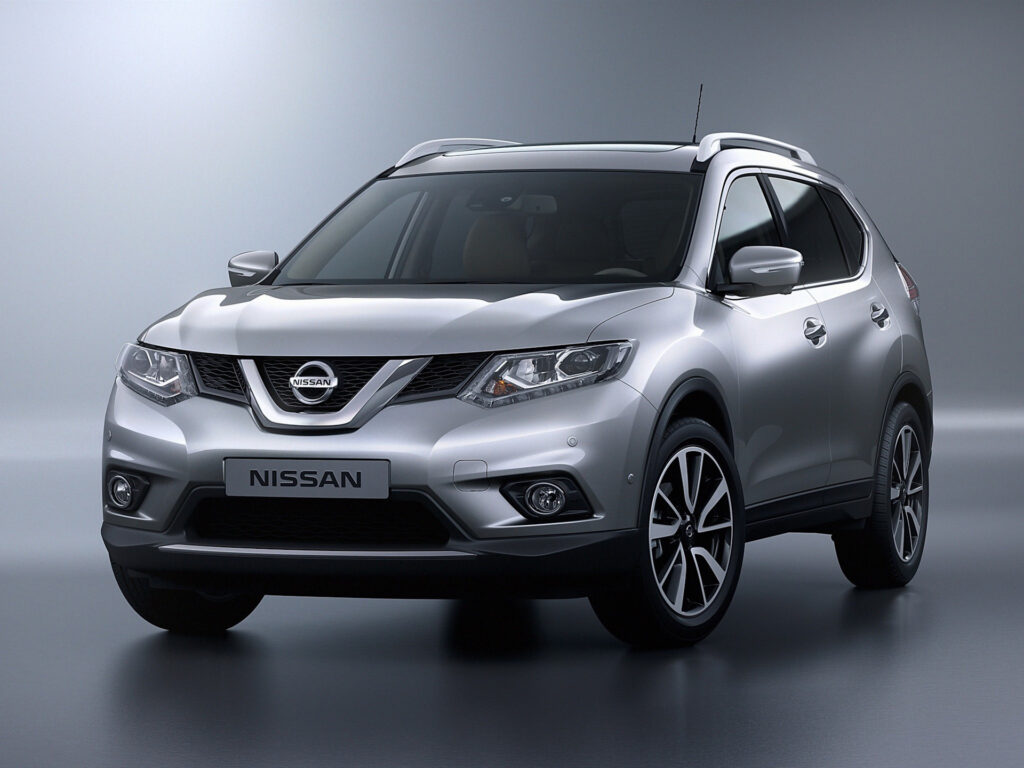Ah, the Nissan X-Trail! This beloved SUV has seen several evolutions over the years, each one building upon the success of its predecessor. Whether you’re a loyal Nissan owner or just curious about the X-Trail’s specs, this guide is for you. Dive in as we explore the various generations, trims, and engines of the X-Trail. Plus, we’ll shed light on the recommended tire pressures and how to reset that pesky low tire pressure indicator.
A Brief Overview of Nissan X-Trail Generations
| Generation | Production Years |
|---|---|
| T30 | 2000-2007 |
| T31 | 2007-2013 |
| T32 | 2013-2021 |
| T33 | 2021-Present |
Each generation boasts unique features, designs, and innovations. Let’s delve a little deeper.
Spotlight on Trims and Engines
T30 Generation
- Trims:
- Base Model
- Comfort
- Luxury
- Engines:
- 2.0L Petrol
- 2.5L Petrol
- 2.2L Diesel
T31 Generation
- Trims:
- XE
- SE
- Tekna
- Engines:
- 2.0L Petrol
- 2.5L Petrol
- 2.0L Diesel
T32 Generation
- Trims:
- Visia
- Acenta
- N-Connecta
- Tekna
- Engines:
- 1.6L Petrol
- 1.6L Diesel
- 2.0L Petrol
T33 Generation
- Trims:
- Visia
- Acenta Premium
- N-Design
- Tekna+
- Engines:
- 1.7L Diesel
- 1.3L Petrol
- 2.0L Petrol Hybrid

Why Is Correct Tire Pressure Crucial?
- Fuel Efficiency: Properly inflated tires can reduce the amount of drag your vehicle experiences, which can lead to better gas mileage.
- Safety: Correct tire pressure ensures a proper grip on the road, reducing the chances of skidding.
- Tire Longevity: Over-inflation can lead to excessive wear in the center of the tire, while under-inflation can lead to wear on the edges.
Understanding PSI
Before we dive into the specifics for each year, it’s essential to understand PSI or Pounds per Square Inch. This measure indicates the amount of air pressure within a tire. Depending on the season, you’ll need to adjust your PSI for optimal performance and safety.
Recommended Tire Pressure for Different Generations and Trim Levels
Keeping your tires properly inflated not only ensures optimal fuel efficiency but also promotes safety. Here’s what Nissan recommends:
| Generation/Trim | Front Tire PSI | Rear Tire PSI |
|---|---|---|
| T30 (All Trims) | 32 | 30 |
| T31 (All Trims) | 33 | 31 |
| T32 (Visia) | 33 | 31 |
| T32 (Acenta) | 32 | 32 |
| T33 (Visia) | 34 | 32 |
| T33 (Tekna+) | 35 | 33 |
Note: Always check your vehicle’s manual or the sticker inside the driver’s door for specific tire pressure recommendations.
Nissan X-Trail Tire Pressure: A Yearly Breakdown
Below is a table showing the recommended tire pressure for Nissan X-Trail across different years of production:
| Year of Production | Recommended PSI for Summer Tires | Recommended PSI for Winter Tires |
|---|---|---|
| 2001 | 32 PSI | 34 PSI |
| 2002 | 32 PSI | 34 PSI |
| 2003 | 32 PSI | 34 PSI |
| 2004 | 32 PSI | 34 PSI |
| 2005 | 32 PSI | 34 PSI |
| 2006 | 33 PSI | 35 PSI |
| 2007 | 33 PSI | 35 PSI |
| 2008 | 33 PSI | 35 PSI |
| 2009 | 33 PSI | 35 PSI |
| 2010 | 33 PSI | 35 PSI |
| 2011 | 33 PSI | 35 PSI |
| 2012 | 33 PSI | 36 PSI |
| 2013 | 33 PSI | 36 PSI |
| 2014 | 33 PSI | 36 PSI |
| 2015 | 33 PSI | 36 PSI |
| 2016 | 33 PSI | 36 PSI |
| 2017 | 34 PSI | 36 PSI |
| 2018 | 34 PSI | 36 PSI |
| 2019 | 34 PSI | 36 PSI |
| 2020 | 34 PSI | 37 PSI |
| 2021 | 34 PSI | 37 PSI |
| 2022 | 34 PSI | 36 PSI |
| 2023 | 34 PSI | 37 PSI |
| 2024 | 34 PSI | 37 PSI |
How to Reset the Low Tire Pressure Light
Noticed the low tire pressure warning light on? After you’ve inflated your tires, follow these steps:
- Turn on the ignition but don’t start the engine.
- Locate the TPMS (Tire Pressure Monitoring System) reset button beneath the steering wheel.
- Press and hold the button until the warning light blinks three times.
- Wait for a few minutes. The warning light should turn off, indicating the system has been reset.
If the light remains on, consider visiting a Nissan service center for professional assistance.
Maintenance Tips for Your X-Trail
For those proud owners out there, here are a few quick maintenance tips to keep your X-Trail in pristine condition:
- Regular Oil Checks: Ensure you’re using the recommended oil and change it as per the service intervals.
- Tire Inspection: Beyond just tire pressure, routinely check for wear patterns, cuts, or bulges.
- Clean Air Filters: A clean air filter ensures optimal fuel efficiency and engine performance.
- Battery Health: Especially in colder climates, ensure your battery is in good health. Most last between 3 to 5 years.
Factors That Can Affect Tire Pressure
While we’ve provided a handy yearly breakdown for the Nissan X-Trail tire pressures, various factors might necessitate periodic adjustments:
- Ambient Temperature: A drop in temperature can reduce tire pressure by approximately 1 PSI for every 10°F decrease.
- Altitude: For every 1,000 feet of elevation, tire pressure can increase by about 0.5 PSI. While this is negligible for many drivers, those living in mountainous regions or frequently changing altitudes should be aware.
- Load: If you’re carrying a heavy load, you might need to adjust the tire pressure accordingly. Most vehicles have a sticker inside the driver-side door or fuel hatch with recommended pressures for heavy loads.
Tire Maintenance Beyond Pressure
Beyond pressure, a few other tire maintenance habits are essential for the Nissan X-Trail owners:
- Regular Rotation: To ensure even wear, it’s recommended to rotate your tires every 6,000 to 8,000 miles.
- Inspection: Periodically inspect your tires for any visible damages, such as cuts, punctures, or bulges.
- Alignment: Ensure your vehicle’s alignment is checked at regular intervals or if you notice your vehicle pulling to one side.
The Importance of Winter Tires
Many Nissan X-Trail owners transition between summer and winter tires. But why?
- Tread Depth and Pattern: Winter tires have deeper treads, providing improved grip on snowy or icy roads.
- Soft Rubber Composition: This allows the tire to remain flexible in cold temperatures, enhancing traction.
So, while maintaining the correct tire pressure is essential, choosing the right tire for the season can be equally vital for safety and performance.
